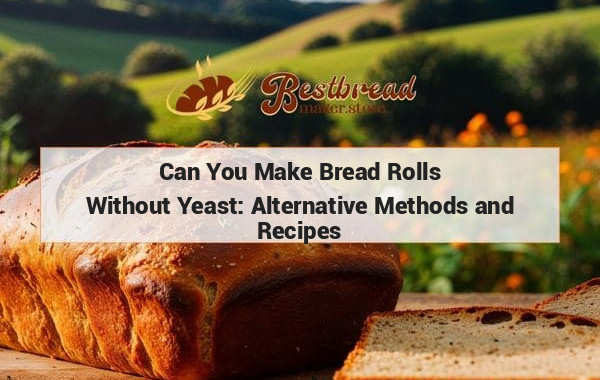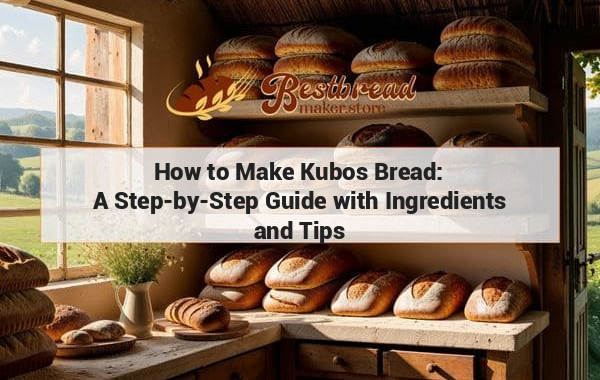How to Make Tissue Bread: Easy Recipe and Step-by-Step Guide
To make tissue bread, start by mixing flour, sugar, yeast, and salt in a bowl. Slowly add warm water and knead the dough until smooth. Let it rise for an hour, then divide the dough into small balls. Roll each ball into a thin sheet, brush with melted butter, and fold into layers. Place the folded dough in a greased pan and let it rise again. Bake in a preheated oven until golden brown. Enjoy your crispy and delicious tissue bread!
How to Make Tissue Bread
Making tissue bread at home is a rewarding experience. This type of bread is known for its soft, layered texture, similar to a flaky pastry. While the process requires patience and attention to detail, the result is a delightful, buttery loaf that can elevate your baking game. Here's a step-by-step guide on how to achieve perfect tissue bread from scratch.
Key Takeaways: Tissue bread requires a unique dough folding technique and butter layering. Following precise steps ensures its flaky texture, making it well worth the effort. Ideal for bakers of all levels, patience is key!
Understanding Tissue Bread and Its Importance
Tissue bread is a delicate bread variety with a light, layered crumb. It’s popular for its texture, which resembles thin layers of tissue, hence the name. What sets tissue bread apart is the method of dough handling and butter incorporation, which requires a different approach compared to traditional bread.
To make tissue bread, the dough is layered with butter, folded multiple times, and baked to perfection. This technique is similar to making croissants but is applied to bread dough to achieve a soft, flaky loaf. The importance of this bread lies in its unique combination of texture and flavor, making it a must-try for anyone interested in artisanal baking.
Step-by-Step Guide to Making Tissue Bread
The process of making tissue bread requires a few specific ingredients and techniques to ensure success. Follow this guide closely to create the perfect loaf.
Ingredients:
- 500g all-purpose flour
- 7g instant yeast
- 50g sugar
- 1 tsp salt
- 250ml warm milk
- 1 large egg
- 100g butter (for dough)
- 150g softened butter (for layering)
1. Preparing the Dough
Start by mixing the flour, yeast, sugar, and salt in a large bowl. Gradually add the warm milk and egg, mixing until the dough forms. Knead the dough for about 10 minutes until it's smooth and elastic. Incorporate the butter slowly, kneading until fully absorbed into the dough.
2. First Proofing
Cover the dough with a damp cloth and allow it to rest in a warm place for 1-2 hours or until doubled in size. This step is crucial for developing the dough’s texture and flavor.
3. Rolling Out the Dough
Once the dough has risen, punch it down to release any trapped air. On a lightly floured surface, roll the dough into a large rectangle. The dough should be thin but not tearing.
4. Layering with Butter
Spread the softened butter evenly over the dough. Fold the dough into thirds, like folding a letter, and roll it out again. Repeat this process two more times. This folding technique is key to creating the tissue-like layers in the final loaf.
5. Final Proofing
After the final fold, let the dough rest again for about 30 minutes. This allows the layers to set and the dough to relax before baking.
6. Baking the Bread
Preheat your oven to 180°C (350°F). Gently transfer the dough to a loaf pan and bake for 25-30 minutes, or until golden brown. The layers will expand during baking, creating the signature flaky texture.
Tips for Success
- Use cold butter: For the layering process, ensure your butter is softened but not melted. Cold butter helps maintain distinct layers in the dough.
- Don’t rush the folding: Patience is key when creating layers. Each fold is important for achieving the final texture of the bread.
- Room temperature matters: If your kitchen is too warm, the butter may melt too quickly, which will affect the layering. Work in a cool environment to keep the butter intact.
Close Entities in Bread Making
When making tissue bread, several close entities contribute to its success. These are components like the quality of flour, the type of butter, and even the folding technique. Understanding how these elements interact can help you make better decisions while baking.
Flour Type
The type of flour used plays a crucial role in tissue bread. All-purpose flour is typically used for this recipe, but bread flour can add more structure. The gluten content in the flour determines how the dough will rise and hold its shape.
Butter Quality
The butter used in layering should be of high quality. European-style butter, which has a higher fat content, works best for this kind of bread. It creates a richer flavor and ensures the layers separate properly.
Folding Technique
The way you fold the dough impacts the texture of the bread. Each fold incorporates air and creates the thin, flaky layers that give tissue bread its unique texture. Proper folding requires precision and care, as uneven folds can lead to inconsistent layering.
The Science Behind Layering
Layering the dough with butter creates steam pockets when the bread bakes, which is responsible for the flaky, tissue-like texture. As the butter melts, it releases steam, which pushes the dough layers apart. This process, similar to puff pastry, results in the light, airy texture that is characteristic of tissue bread.
Tools You Need for Tissue Bread
- Rolling Pin: Essential for rolling out the dough evenly.
- Bench Scraper: Helps with folding and moving the dough.
- Loaf Pan: A standard-sized loaf pan works best for baking tissue bread.
Frequently Asked Questions (FAQs)
1. What makes tissue bread different from regular bread?
Tissue bread is unique due to its layered, flaky texture. This texture is achieved by folding the dough multiple times with butter, similar to the technique used for croissants.
2. How do I prevent the butter from melting too quickly during layering?
To prevent the butter from melting, work in a cool environment and use cold butter. If the dough becomes too warm, refrigerate it briefly between folds.
3. Can I use margarine instead of butter?
While margarine can be used, it won’t yield the same rich flavor and flaky texture as butter. Butter is recommended for the best results.
4. Why did my bread turn out dense?
If your bread is dense, it could be due to overworking the dough or not allowing enough time for the dough to rise. Make sure to knead just enough to develop gluten and let the dough proof properly.
5. Where can I find the best bread maker to assist in making tissue bread?
If you're looking for a high-quality bread maker to simplify the process, check out the recommendations at bestbreadmaker.store for the best options in 2024.
By following these steps and understanding the key elements of making tissue bread, you'll be able to recreate this soft, flaky bread at home with confidence. Remember, practice makes perfect, and the more you experiment, the better your results will be!








